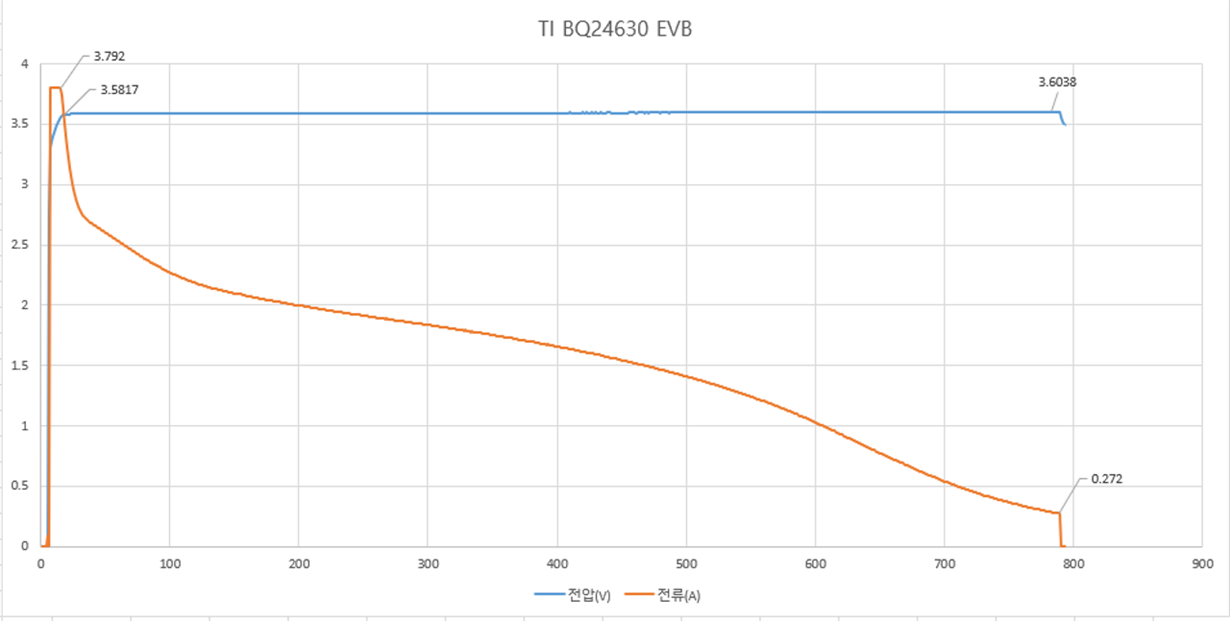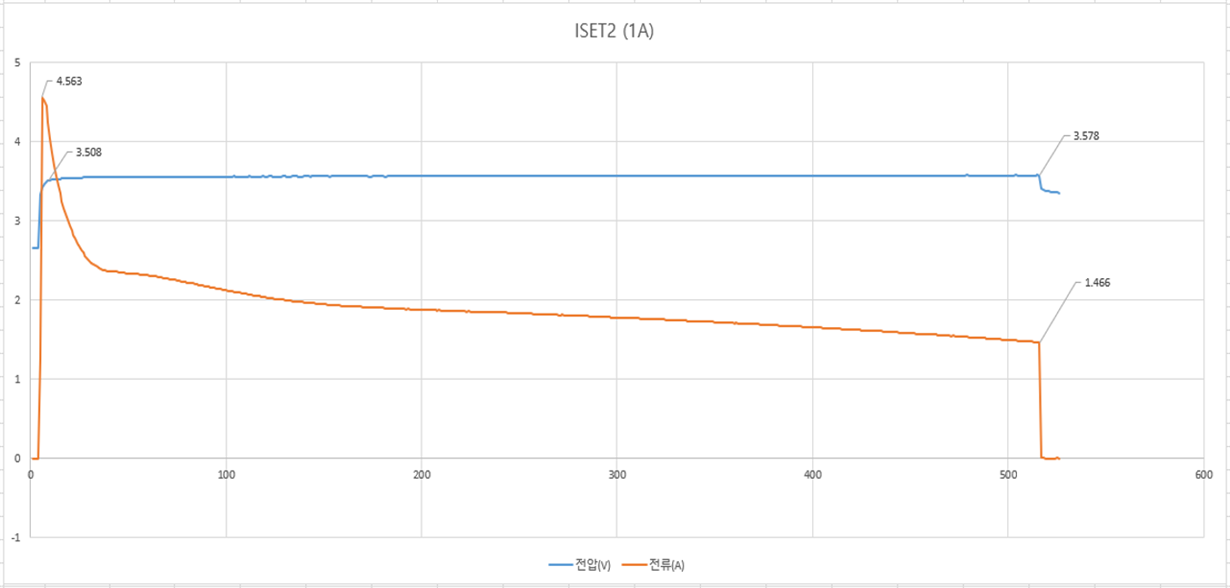Other Parts Discussed in Thread: BQ25306
Hello TI experts,
my customer made PCB sample using BQ24630, there is some problems about charging time and constant current.
I show you some results below;
1. charging current is changed, (upper: 4A / below : 6A) termination current is same (300mA default)
--- charging time is 13min (CC:4A), 14min(CC:6A)
2. termination current is changed (upper : 300mA / below : 1A), charging current is same (6A)
--- charging time is 14min(TC=300mA), 8m50sec(TC=1A)
Here is my question;
1. I can see the charging time is quite not different between 6A charging and 4A charging. even 6A charging is longer. is it normal operation?
2. I cannot see the constant current phase long time. even it ends less than 0.5 seconds, as you see the spike on orange voltage line. is it normal operation?
3. anyway our goal is to reduce the time. but i found only way to reduce the charging time, lower the termination current.
the result is as you see, time is quite reduced. but we cannot use the battery as long as we want. because final battery voltage is only 3.578V. (full voltage is 3.6V)
we can use the battery fully when the voltage is 3.6V compeletely.
4. is there any way to increase the time of constant current?
5. is there any way to reduce the whole charging time except lower termination current?
6. can i use the Li-ion charger for LiFePo4? if not, what is the side effect?
7. is there any solution for rapid charge of LiFePo4 battery?
and here is the information of our battery. (LiFePo4, 3.2V nominal, 3.6V max, 360mAh capacity)
Please check this issues. Thanks.
Best regards,
Chase





